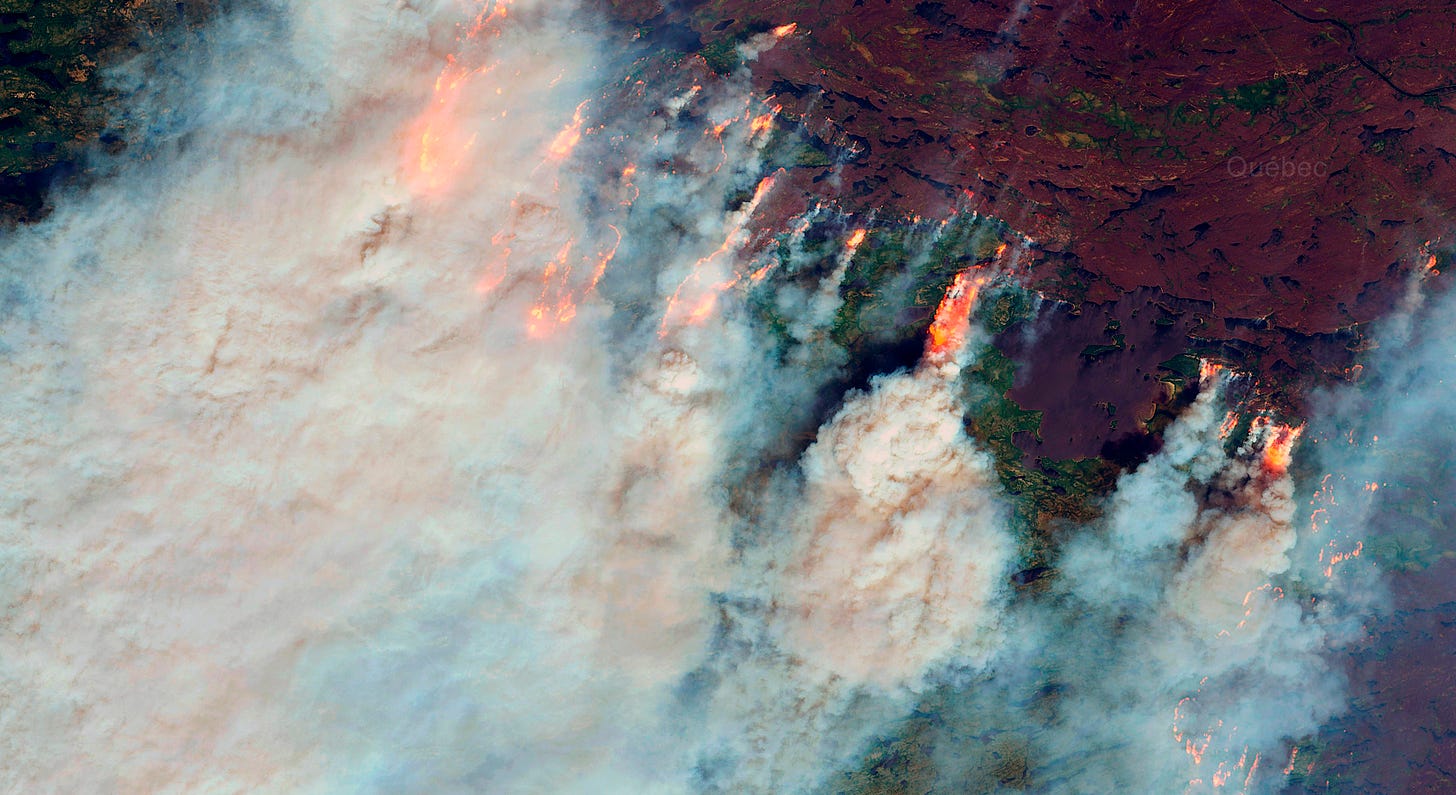Canadian Wildfires Poison Air For Millions
Climate Change Creates a New Summer Reality
A few summers ago I stepped out my door in suburban Detroit to begin my nightly walk and was instantly accosted by an acrid burning smell in the air.
At first I thought it was a neighbor’s BBQ and so I decided to keep walking until the smell passed. But it never did. One mile. Two miles. Three miles. It didn’t matter how far I walked. The smell of smoke was everywhere and there was no escape.
I had grown up in Detroit and lived there for most of my life. And I had never hitherto experienced such a phenomenon. Later that night I started Googling until I found an explanation: Canadian wildfires burning hundreds or even thousands of miles away had deposited dangerous levels of smoke into our skies. The air pollution was off the charts. And I shouldn’t have been outside exercising at all.
On Fire For Thee
Since that time the Canadian wildfire invasion has become something of an annual affair in Detroit and much of the Eastern United States. Some years are worse than others. But it seems every year has a least one episode of apocalyptic wildfire smoke which blankets the region into a surreal, otherworldly haze.
This year’s event began in earnest on July 29th, when smoke from fires in Saskatchewan and Manitoba crossed into northern Minnesota and onward to the rest of the Upper Midwest. It has persisted for nearly a week, causing air quality to plummet to dangerous levels.
Fine particulate matter pollution (PM 2.5) is small enough to penetrate deep into our lungs and provoke respiratory and cardiovascular disease. You can think of them like millions of tiny bullets which - once inhaled - bounce around your body and wreak havoc.
Long term exposure leads to chronic disease. But even short term exposure can be dangerous. On days when PM 2.5 pollution is high, the risk of a heart attack can double for those with underlying risks. North American cities have had amongst the world’s highest levels of such pollution over the last few days due to the fires.
Wildfires, of course, have always existed. But climate change has created higher temperatures, dryer conditions and longer fire seasons. Fires are now larger, more intense and more frequent than before humanity altered the Earth’s atmosphere by burning fossil fuels.
And that alteration is more or less permanent. There are plans afoot to increase prescribed burns and invest more resources into firefighting. Yet Canada’s boreal forest covers 3 million square kilometers, which is roughly the size of India. Clearing brush and hiring more firefighters can only do so much to mitigate fire danger in such a vast land.
In truth, climate change has created an enduring new reality for much of Canada and the Eastern United States. In a warmer world places like Las Vegas and Phoenix will simply be too hot to go outside for a few weeks a year. And similarly, places like Toronto, Chicago, Minneapolis, Detroit and Montreal will be too smoky.



